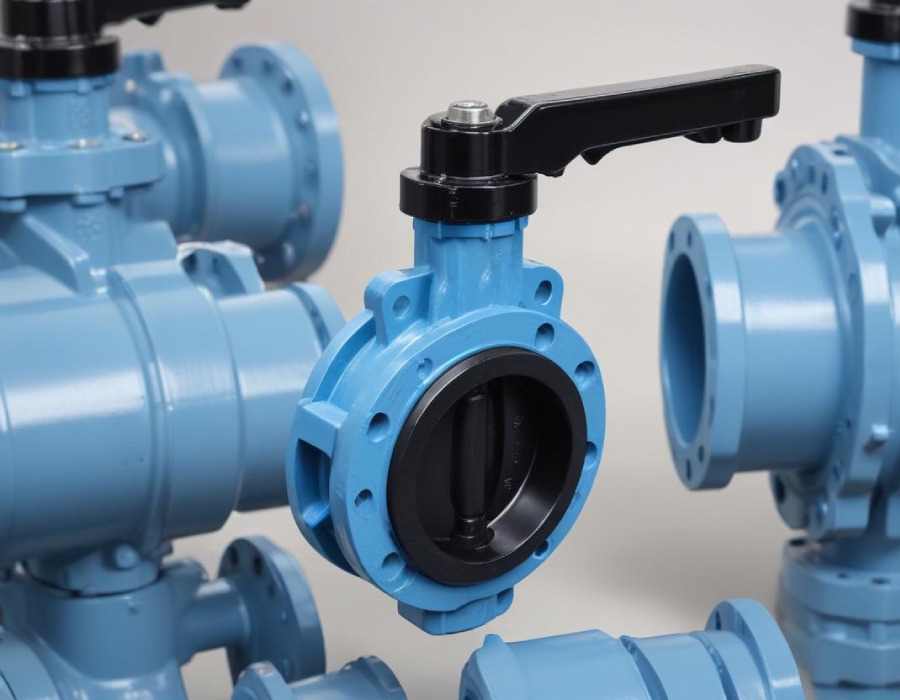Butterfly valve operation is essential in many piping systems due to their ability to control fluid flow efficiently and precisely.
With their simple and efficient design, these valves provide quick and reliable control of fluid flow, gaining favor across multiple sectors. In this article, we will delve into the mechanics of butterfly valves, the variety of actuators available, their applications, and why it is crucial to operate them correctly.
Purpose of Butterfly Valves
Butterfly valves are primarily used to regulate the flow of fluids in a variety of industrial applications. Their design allows for precise control of flow, making them ideal for situations requiring quick and efficient flow adjustment.

Importance in Piping Systems
In piping systems, butterfly valves are crucial for maintaining a constant and controlled flow of fluids. These valves are especially beneficial in situations that require quick and secure shut-off, as well as in environments where space is limited, thanks to their compact design that occupies less space than other types of valves.
Operating Principle of a Butterfly Valve
The operating principle of a butterfly valve is simple yet effective. It consists of a disc that rotates around an axis, allowing or blocking the passage of fluid depending on the position of the disc.
Opening and Closing Mechanism
The operation of a butterfly valve is based on the rotation of the disc. When the disc is positioned parallel to the direction of the flow, the valve remains open, allowing fluid to pass through. Rotating the disc perpendicular to the flow closes the valve, blocking the passage of fluid. This mechanism allows for quick and efficient operation with minimal resistance to flow.
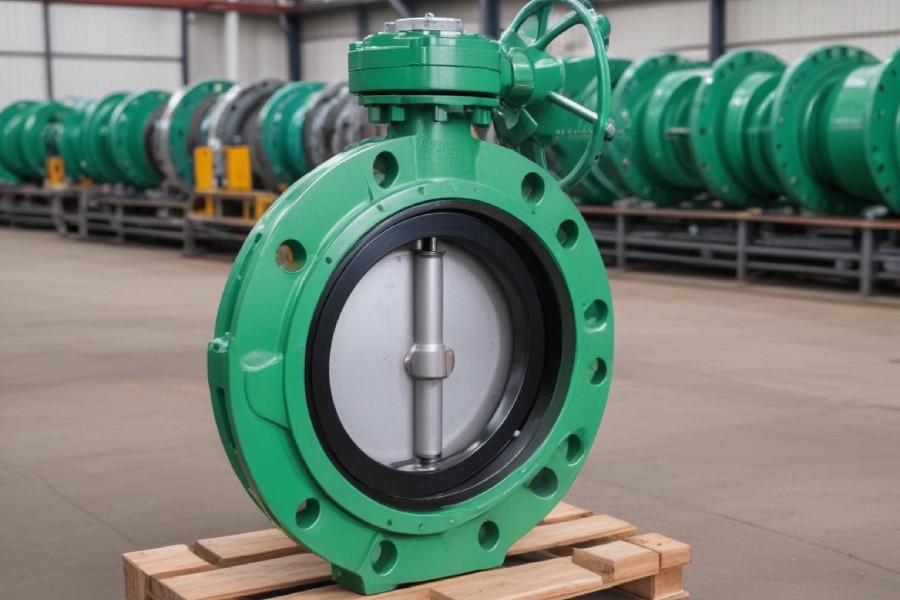
Key Components in Operation
The key components in the operation of a butterfly valve include the valve body, the disc, the stem, and the seat or seal. Each of these components plays a crucial role in the overall function of the valve, ensuring precise and reliable control of fluid flow.
Types of Actuators Used in Butterfly Valves
Butterfly valves can be operated using different types of actuators, which control the disc according to the specific needs of the application.
Manual Actuators
Manual actuators are the most basic form of operating a butterfly valve. They consist of a lever or wheel that is manually turned to open or close the valve. These actuators are suitable for applications where frequent or rapid operation is not required and where the valve is easily accessible.
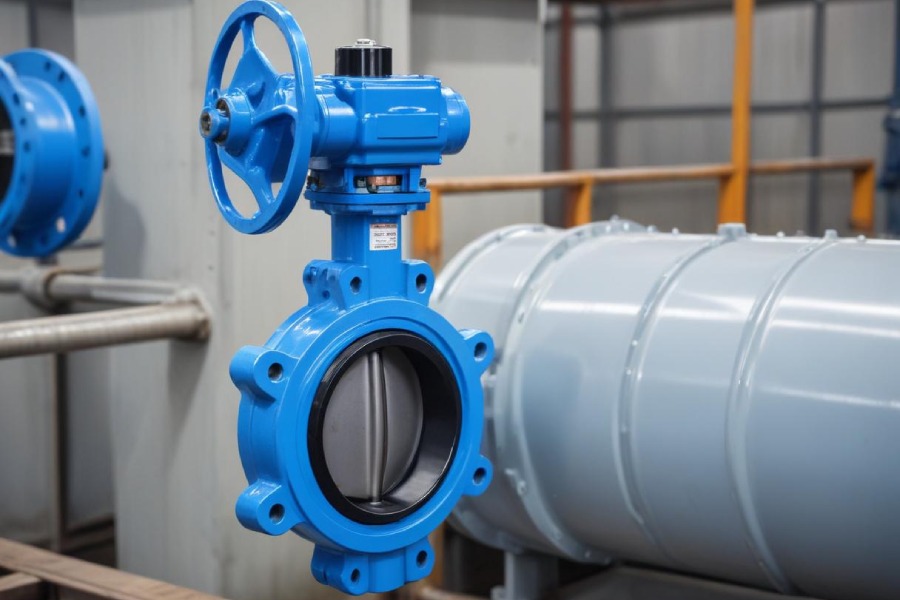
Pneumatic Actuators
Pneumatic actuators use compressed air to move the valve disc, making them perfect for situations that require rapid and frequent control and benefit from automation. Known for their speed and reliability, these actuators are prevalent in sectors like the chemical and petrochemical industries.
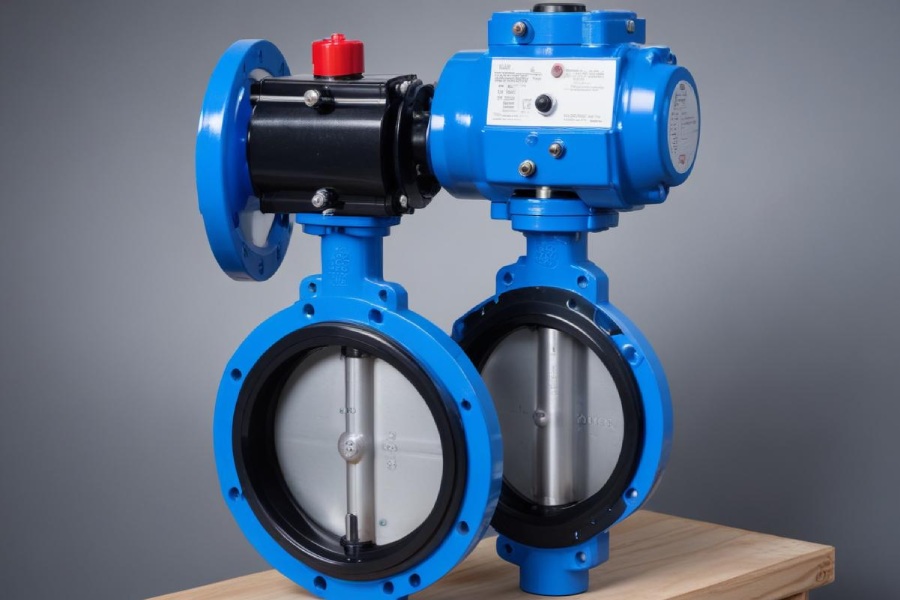
Electric Actuators
Electric actuators convert electrical energy into mechanical motion to operate the butterfly valve, suitable for applications requiring precise control and access to electrical power. Widely used in industrial and commercial settings due to their precision and compatibility with automated control configurations.
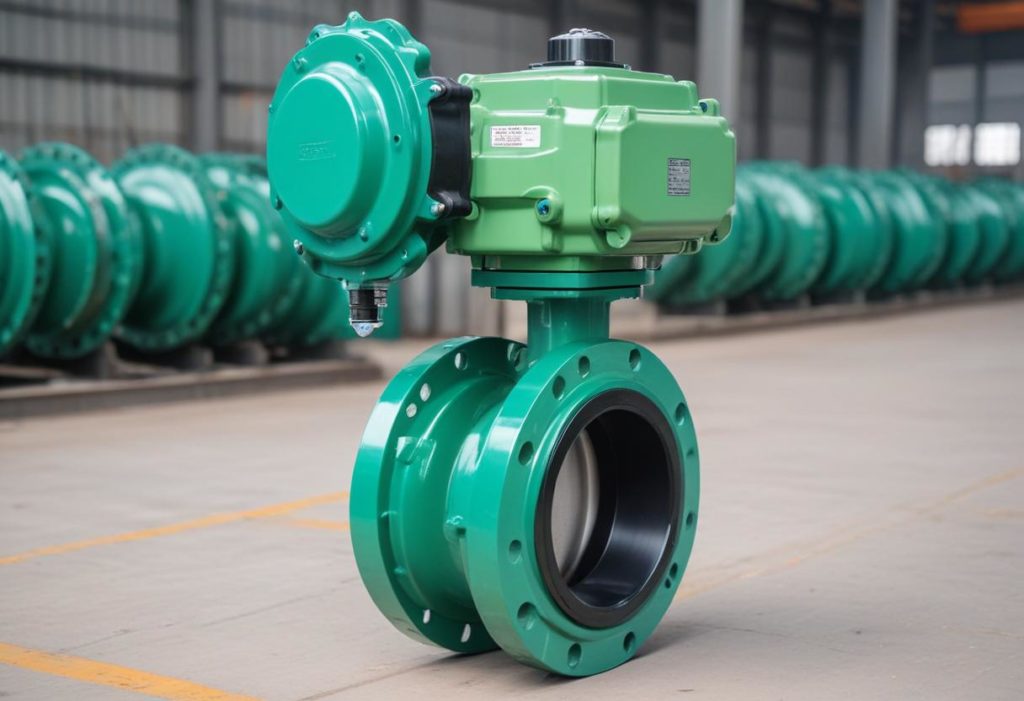
Applications of Butterfly Valves
Butterfly valves find wide application across various industries due to their adaptable design and ability to handle different fluids and operating scenarios.
Water and Wastewater Sector
In the water and wastewater sector, butterfly valves play a vital role in regulating water flow in distribution systems, water treatment facilities, and sewer systems. Their ability to ensure a secure seal and easy operation makes them particularly suitable for these purposes.
Chemical and Petrochemical Sector
In the chemical and petrochemical industries, butterfly valves are indispensable for controlling the flow of various chemicals and hazardous substances. Their ability to withstand corrosive fluids and high temperatures makes them well-suited for the demanding requirements of these applications.
Food and Beverage Sector
In the food and beverage industry, butterfly valves are used to regulate the movement of liquids and gases during production and packaging phases. Their sanitary design and ease of cleaning make them ideal for environments prioritizing cleanliness and safety.
Cryogenic Sector
Butterfly valves play a crucial role, especially in cryogenic applications where the precision and reliability of cryogenic valves are fundamental for optimal performance.
Naval Sector
In the Naval sector, butterfly valves are crucial in regulating and controlling fluid flow in piping systems aboard ships. Their compact and lightweight design makes them ideal for installations where space and weight are critical factors. Additionally, the ability of butterfly valves to provide a tight seal and precise flow control makes them a reliable choice for maritime applications, including ballast water systems, cooling systems, and fuel distribution networks.
Paper Mill Sector
In the paper mill industry, butterfly valves are fundamental for the effective handling of liquids used in the production process. These valves accurately adjust the flow of water and other essential fluids in the creation of pulp, paper manufacturing, and wastewater treatments. Their robust design and ability to withstand rigorous working conditions make them perfect for industrial environments demanding efficient and safe flow control.
Desalination Sector
In the desalination industry, butterfly valves are vital for regulating the flow of saltwater and chemicals used in purification methods. These valves facilitate precise flow control in desalination facilities, contributing to the efficient operation of reverse osmosis and evaporation systems. Their corrosion resistance and ability to maintain a tight seal are crucial for the efficiency and reliability of these operations essential for obtaining potable water.
These characteristics highlight the importance of butterfly valves within flow control valves, emphasizing their features and applications in the maritime industry, where their relevance is crucial for maintaining operational efficiency and safety in a rigorous and demanding environment.
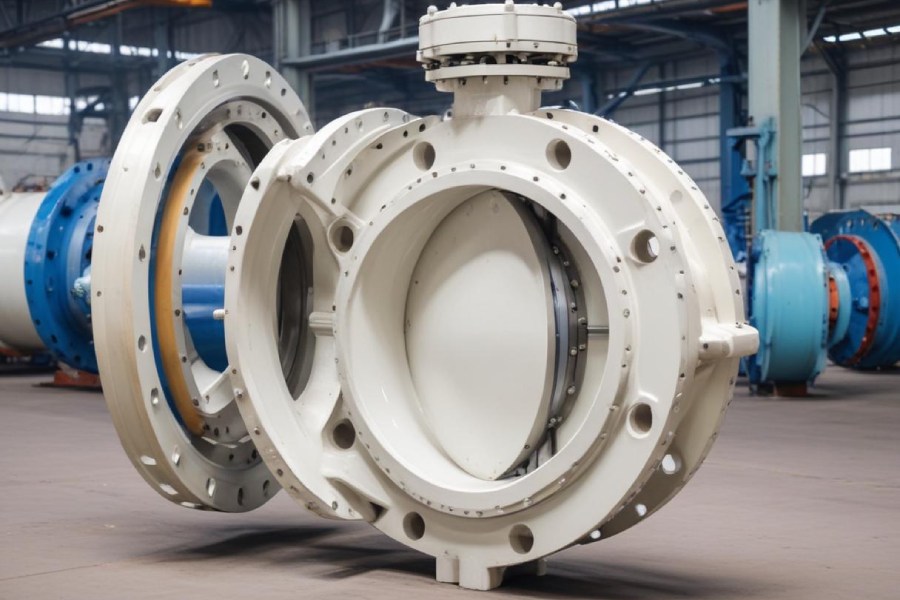
Technological Innovations in Industrial Valve Manufacturing
Technological innovations in industrial valve manufacturing have revolutionized their functionality, significantly improving performance and durability. Innovations such as composite materials and anti-corrosive coatings, as well as precision manufacturing techniques and computer simulations, have enabled butterfly valves to offer greater resistance to extreme conditions and more efficient operation. These technologies not only optimize fluid flow control but also extend the valves’ lifespan, reducing maintenance costs and improving reliability in various industrial applications.
At Asimer Group, our philosophy focuses on technological innovation to offer products of the highest quality and performance. CNC machining allows us to produce components with exact tolerances, ensuring a perfect fit and optimal performance in all industrial environments.
In addition to CNC machining, welding is another crucial aspect of our pump and valve projects. We apply advanced welding techniques that ensure a solid bond between materials, essential for withstanding the most demanding operating conditions, such as extreme temperatures and corrosive fluids present in the chemical and petrochemical sectors.
These innovations not only enhance the performance and durability of our valves but also optimize energy efficiency and reduce maintenance costs throughout their lifecycle.
Our commitment to engineering excellence allows us to offer reliable and advanced solutions that meet our clients’ demands in all industrial sectors.
Energy efficiency is a crucial factor in the design and operation of industrial valves, including butterfly valves. These valves play a significant role in managing fluid flow in industrial systems, where optimizing energy consumption is fundamental to reducing operating costs and improving environmental sustainability.
Butterfly valves, by allowing precise and efficient flow control, play an essential role in regulating fluid without unnecessary losses. Additionally, technological innovations such as automatic actuators and advanced materials have further improved the operational efficiency of these valves, contributing not only to the efficient operation of industrial systems but also to achieving more ambitious energy efficiency goals in various industrial applications.
Conclusion
Butterfly valves play a vital role in numerous industrial environments, thanks to their effective design and ability to precisely regulate fluid flow. To ensure optimal performance and reliability, it is essential to understand their functionality, the various types of actuators used, and their practical applications.
Butterfly valves operate using a disc that rotates around an axis to open or close fluid flow. Essential components include the valve body, disc, stem, and seat.
Various types of actuators, such as manual, pneumatic, and electric, cater to specific control requirements based on the demands of each application. These valves find application in sectors such as water and wastewater, chemical and petrochemical, and food and beverage.
Ensuring the proper operation of butterfly valves is crucial for both efficiency and safety in piping systems. Regular maintenance, including inspection and replacement of any worn components, is vital to extend the valves’ lifespan and avoid functional issues. Through diligent understanding and care, optimal performance and reliable use can be guaranteed in environments where butterfly valves are implemented.
Butterfly valves serve as an efficient and adaptable method for managing flow in numerous industrial environments. Their simple yet robust design, along with various actuator options, facilitates versatile and effective management. By emphasizing constant maintenance and careful operation, the efficiency and durability of these essential components in sophisticated piping networks can be enhanced.

